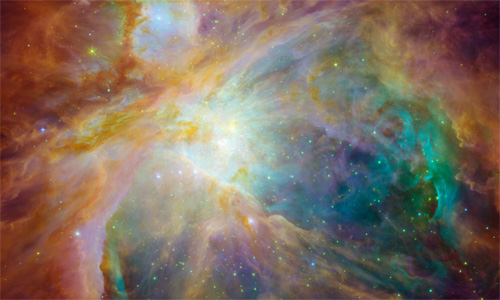
Next to trying to understand the pivotal scene in Trading Places, few things inspire more headaches than conversations about space and time. And yet, we try because we are, by nature, explorers, they tell us.
MPR’s Midmorning today invited us to explore such things in a fascinating interview with Heidi Hammel, a senior research scientist at the Space Science Institute. She is helping to build the James Webb Space Telescope scheduled to launch in 2013. Its purpose, like the Hubble, is to look at distant galaxies, which, because it takes so long for light to reach us, is looking back in time.
Among her more interesting observations was that the universe is expanding so fast, that we will soon — and for purposes of these sorts of high falutin’ discussions “soon” can mean within a billion years, give or take — lose the ability to look back at the beginning of it all — the time at which time started.
A caller asked “why” we do these things. What do we get out of it? There wasn’t much of an answer; something about looking at something at the far end of the universe helping us to learn what questions we should ask about our own planet.
But perhaps there was an obvious answer: so we can see the end coming. By way of City Pages, we are now fretting over WR 104, a binary star 8,000 light years away, with a couple of nearby stars that are “about” (see explanation of “soon” above) to explode, taking out WR 104 with it, which may occur as a gamma-ray burst, and I don’t have to tell you what that means. (Hint: It has something to do with the end of all life as we know it.)
So what if Heidi and her gang are merrily looking at a pretty star somewhere, only to move the telescope slightly and learn a giant cosmic pie is heading for our collective face? Does she tell someone that the invention that was to help determine the beginning of life had actually discovered the end of it? What if she accidentally let it slip today on Midmorning? Would it change the way you look at the world?
Sorry about the headache.
